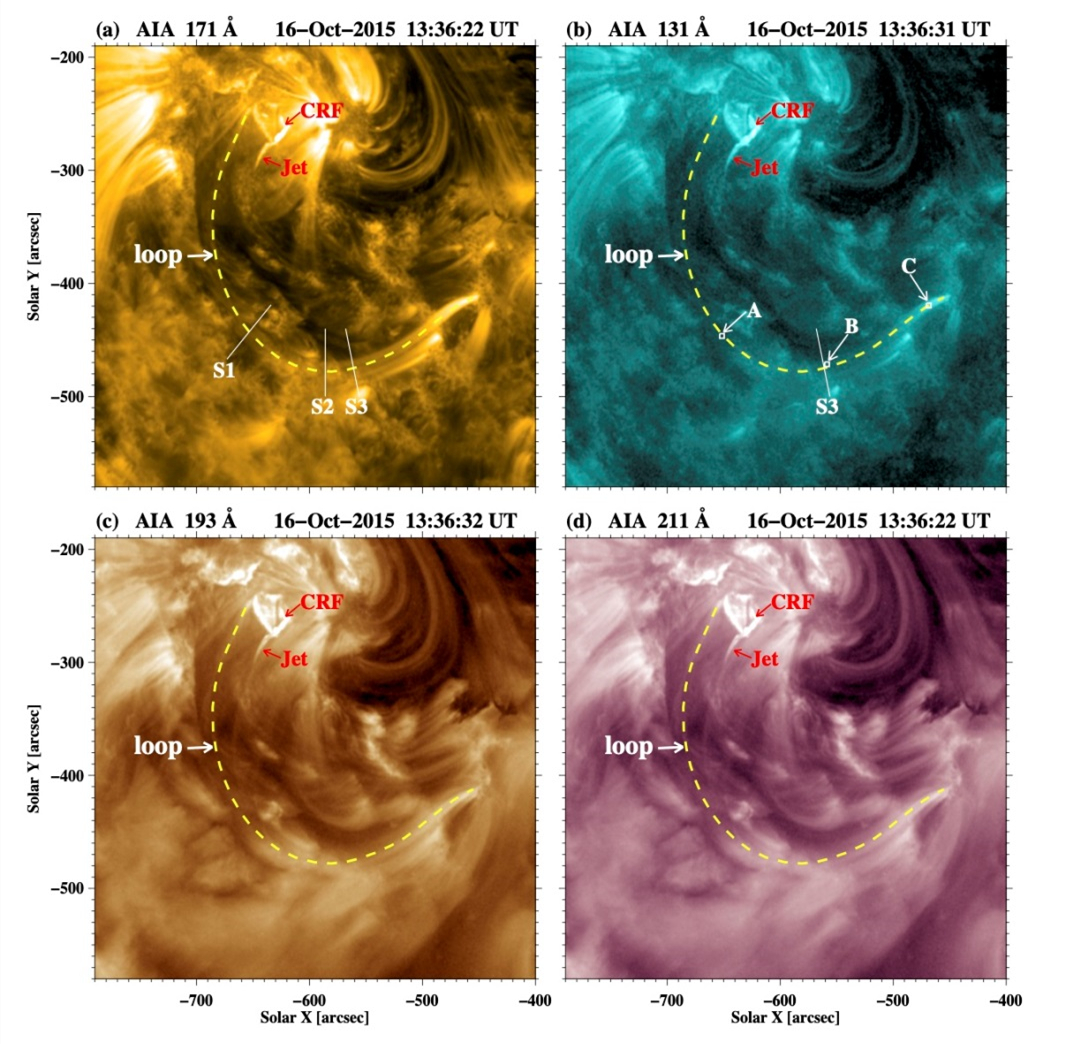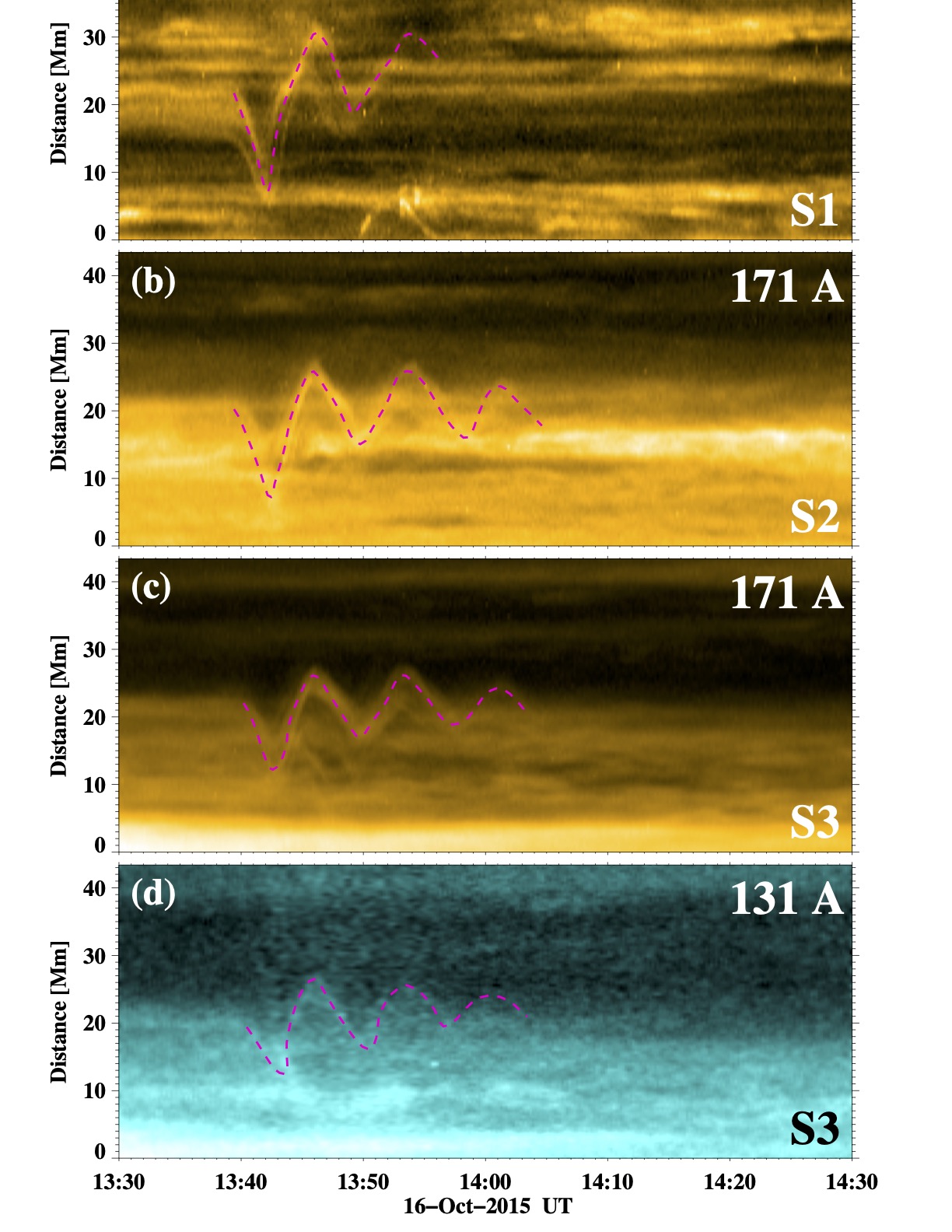Coronal Loop Vibrates after Collision with a Solar Jet
Waves and oscillations are prevalent in the fully ionized solar corona, which has temperatures of several MK. The periodic transverse displacements of coronal loops are usually considered as kink oscillations detected in EUV wavelengths. Standing fast kink-mode oscillation was initially discovered by the TRACE spacecraft. The commencement of the loop oscillation usually coincides with a nearby eruption (flare, jet, or filament eruption) in the lower corona, which is considered the predominant mechanism for exciting kink oscillations. The observed loop oscillations in combination with MHD wave theory provide an effective tool for determining the local physical parameters, such as the magnetic field strength and the Alfvén speed of the oscillating loops, which are difficult to measure directly.
In a recent paper by DAI and ZHANG et al from Purple Mountain Observatory (PMO) of the Chinese Academy of Sciences (CAS), multiwavelength observations of the transverse oscillation of a large-scale coronal loop with a length of over 350 Mm are reported. The oscillation was induced by a blowout coronal jet, which was related to a C4.2 circular-ribbon flare (CRF) in active region 12434 on October 16, 2015 (Fig. 1). The researchers took several slices along the loop to assemble time-distance diagrams and used an exponentially decaying sine function to fit the decaying oscillation (Fig. 2). It is found the oscillation is most pronounced in AIA 171 and 131?, and is almost in phase along the loop with peak initial amplitude of 13.6 Mm, meaning that the oscillation belongs to the fast standing kink mode. The oscillation lasts for 3.5 cycles with an average period of 462 seconds and an average damping time of 976 seconds. Coronal seismology of the kink mode was applied to estimate the Alfvén speed (~1210 km/s) and the magnetic field strength (30-43 G) in the oscillating loop. In addition, the researchers measured the magnetic field (21-23 G) of the loop through NLFFF modeling using the flux rope insertion method. The magnetic field strength estimated using two different approaches are on the same order of magnitude, which confirms the reliability of coronal seismology by comparing with NLFFF modeling.

Fig. 1 EUV images of the large-scale coronal loop (dashed yellow line) observed by SDO/AIA in 171, 131, 193, and 211? before flare. The straight solid lines (S1, S2, and S3) are used to analyze the transverse oscillation. The red arrows point to the locations of the CRF and blowout coronal jet. [Image by ZHANG Qingmin]

Fig. 2 Time-distance diagrams of the three slices (S1, S2, and S3) in 171 and 131?. The dashed magenta lines outline the transverse loop oscillation between 13:39 UT and 14:05 UT. [Image by ZHANG Qingmin]
This work, corresponded by Dr. Qingmin Zhang, is mainly supported by the National Natural Science Foundation of China, the CAS Strategic Pioneer Program on Space Science, and Youth Innovation Promotion Association of CAS. The paper has been published in Astronomy & Astrophysics recently.